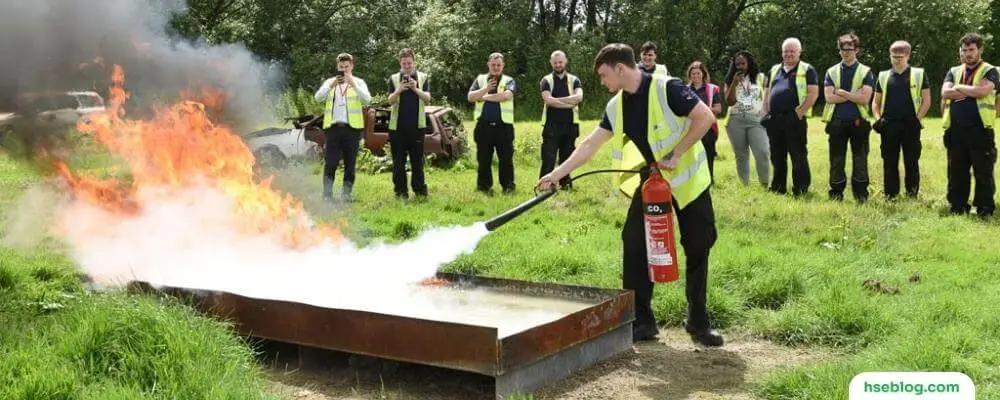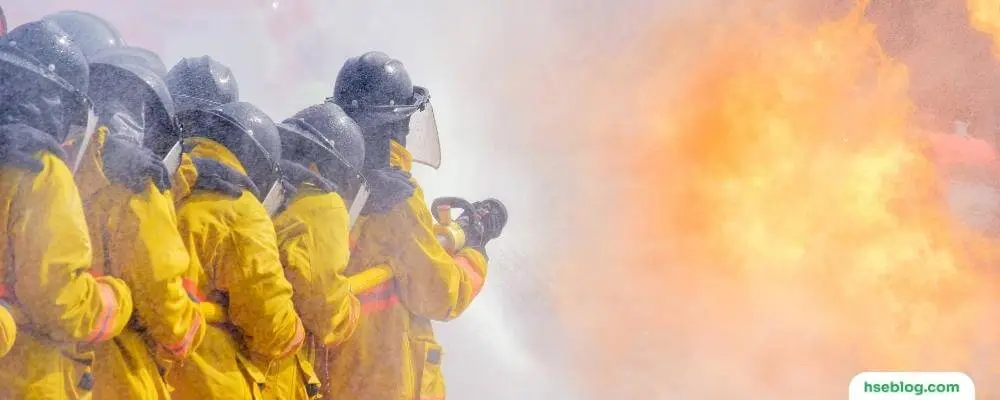Fires can be devastating, causing injury, loss of property, and even death. Therefore, it is essential to provide effective fire safety training to ensure that individuals know how to prevent fires and respond appropriately in an emergency. This blog will discuss the best practices for delivering effective fire safety training. Whether you are an employer responsible for the safety of your employees or an individual interested in learning more about fire safety, these best practices will help you provide effective training that can ultimately save lives.
Importance Of Effective Fire Safety Training
Effective fire safety training is crucial for ensuring the safety of individuals in buildings and other structures, as it prepares them to respond appropriately in the event of a fire. Here are some of the reasons why fire safety training is so important:
- Fire safety training can help prevent fires from occurring in the first place. By providing training on identifying fire hazards and properly handling potentially dangerous situations, individuals can take steps to prevent fires from starting.
- Fire safety training can help individuals respond quickly and effectively in a fire. Time is of the essence in a fire emergency, and knowing what to do can make the difference between life and death. Fire safety training can help individuals understand how to evacuate a building safely, use fire extinguishers, and contact emergency services.
- Fire safety training can help minimize the damage caused by fires. Even with the best prevention measures in place, fires can still occur. However, individuals who have undergone fire safety training are better equipped to respond quickly and appropriately, which can help minimize the damage caused by a fire.
- Fire safety training can save lives. Knowing how to respond quickly and safely can mean the difference between life and death in the event of a fire. Effective fire safety training can provide individuals with the knowledge and skills to protect themselves and others in an emergency.
Overall, fire safety training is essential for protecting individuals and minimizing the damage caused by fires. By providing individuals with the knowledge and skills they need to prevent fires from occurring and respond effectively in the event of a fire, fire safety training can help ensure the safety of everyone in a building or other structure.

Goal & Objectives Of Fire Safety Training
Fire safety training aims to equip individuals with the necessary knowledge, skills, and abilities to prevent fires, respond effectively to fire emergencies, and minimize the risk of fire-related injuries, property damage, and loss of life. Goal & objectives of fire safety training:
- Awareness and understanding: Enhance the participants’ awareness and understanding of fire hazards, fire behaviour, and fire prevention methods in various settings like homes, workplaces, and public spaces.
- Fire prevention: Educate individuals on the importance of good housekeeping practices, proper storage of flammable materials, and adherence to fire safety regulations to minimize the risk of fires.
- Fire protection systems: Familiarize participants with different types of fire protection systems, such as fire alarms, sprinklers, and extinguishers, as well as their proper maintenance and usage.
- Evacuation procedures: Teach individuals how to develop and implement effective fire evacuation plans, emphasizing the importance of clear communication, designated escape routes, and assembly points.
- Emergency response: Train individuals in the appropriate response to fire emergencies, including raising the alarm, contacting emergency services, and providing first aid if necessary.
- Firefighting techniques: Equip participants with basic firefighting skills, such as using fire extinguishers and blankets, and understanding their limitations and appropriate applications.
- Personal protective equipment (PPE): Educate individuals about the importance of using appropriate PPE, such as fire-resistant clothing, gloves, and eye protection, when dealing with fires or fire-related hazards.
- Risk assessment: Teach participants to conduct fire risk assessments to identify potential hazards, evaluate their impact, and implement appropriate control measures to mitigate risks.
- Legal compliance: Ensure participants know relevant fire safety legislation, codes of practice, and industry standards and understand their responsibilities and obligations under these regulations.
- Continuous improvement: Promote a culture of continuous learning and improvement, encouraging participants to stay updated on new fire safety practices, technologies, and regulations and share their knowledge with colleagues and peers.
Best Practices for Delivering Effective Fire Safety Training
As an employer or individual interested in fire safety, it is important to understand the best practices when delivering effective training. These best practices include:
1. Familiarize Yourself With All Relevant Fire Safety Regulations And Procedures
Before teaching, it’s important to understand the laws and requirements surrounding fire safety in the jurisdiction in which you are teaching. Ensure that your training program covers all applicable regulations and that any course materials or activities reflect them. Depending on the participant’s needs and the scope of your training, you may need to be familiar with standards from the Occupational Safety & Health Administration (OSHA), the National Fire Protection Association (NFPA), and other organizations.
2. Deliver Training That’s Appropriate for Each Participant or Group
It’s important to ensure that fire safety training is tailored to the needs of each participant or group. Consider their educational level, job role, and how much they already know about fire safety. By taking into account different types of learners and varying levels of knowledge, you can more effectively engage your audience throughout the training session.
3. Make Use Of Interactive Learning Activities
Interactive learning activities are a great way to keep participants engaged while teaching them important fire safety skills and concepts. Depending on the style of training you choose, these activities could include role-playing scenarios, demonstrations with props, quizzes, or field trips to a local fire station. Whichever activities you select should be relevant to tasks that participants need to complete in their jobs.
4. Ensure That Participants Have Access To Necessary Resources
To successfully complete a fire safety training program, participants must have access to the necessary tools and resources. This could include educational materials or equipment, depending on the training you provide. These items can ensure that all participants have an equal opportunity to learn and retain what they’ve been taught.
5. Monitor Progress And Adapt As Needed
It’s important for trainers to pay attention to how participants respond throughout their training program. Monitoring progress allows trainers to make adjustments as needed to maximize effectiveness. If some concepts seem unclear or certain activities aren’t resonating with the group, consider breaking into smaller groups or providing supplemental materials or activities that address the issue.

6. Make Use Of Visual Aids
In addition to interactive activities, visual aids can also be used to help participants better understand and retain information. This could include diagrams, photos or videos that allow participants to visualize what they’re being taught. Try to find resources that are relevant to the specific needs of your group as well as visually appealing to keep them engaged.
7. Provide Opportunities For Questions And Feedback
Allowing for questions and feedback throughout a fire safety training program is essential for effective learning. Allowing participants to ask questions and receive answers can help clarify confusing concepts or points of confusion. In addition, providing opportunities for feedback allows trainers to better gauge how their training program is being received. This can help trainers make necessary adjustments to improve the effectiveness of the course.
8. Follow Up With Participants After Training
Once a fire safety training program has been completed, following up with participants is important to ensure that they have retained what they learned. Consider sending out surveys or having participants take an online quiz to assess their knowledge and determine if additional instruction is needed. Taking these steps can also provide helpful feedback for future training and identify areas for further improvement.
9. Maintain Records Of Who Attended The Training
Finally, trainers must maintain records of who attended the training, when it took place and any notes from the session. Keeping organized records can help ensure that all participants have reviewed and understood the fire safety information presented in the training. It can also be a valuable reference for trainers preparing for future courses.
By following these steps, trainers can create effective, engaging, informative fire safety training programs. By encouraging participation, providing necessary resources, and actively monitoring progress, they can ensure that their participants understand essential fire safety principles while working to become better prepared for potential emergencies. In doing so, they will set themselves up to provide successful fire safety training for years.
Conclusion
Effective fire safety training is essential for ensuring the safety of individuals and preventing property damage in the event of a fire. Trainers can ensure that their fire safety training is effective and impactful by following the best practices outlined in this blog, including understanding the audience, using interactive and engaging techniques, and conducting regular evaluations.
Additionally, utilizing technology and staying up-to-date with the latest industry developments can help trainers provide comprehensive and relevant training that prepares individuals for any emergency situation. By prioritizing fire safety training and incorporating these best practices, individuals and organizations can create a safer environment for everyone.

